Compact SUVs are growing in popularity with manufacturers clamouring to put up a model of their own.
But do they really serve well as a family car?
As it happens I had both at the same time, a Toyota C-HR and a small baby, so let’s see how it fared…
Exterior
Even before you hop on board, the trickiest thing about the Toyota C-HR is remembering where to place the hyphen.
What you won’t mistake is the presentation of the small SUV with the sharp lines (especially in the rear) and, in this case, the bold yellow paint job.
Though bright it may be, it’s a practical colour; easy to spot in a carpark sea of blue and white and should be more commonplace.
The compact design is striking, modern and flamboyant with bits jutting out like the spoiler and taillights similar to the Honda CR-V.
The rear windows taper upwards to the rear roofline with a high-mounted, hidden door handle.
 Interior
Interior
The C-HR looks small and feels small.
The cabin is a little claustrophobic in the rear seat in particular, however, it is adequately decked out with nice big cup holders, cup holders in the rear door armrests, and a centre console angle towards the driver.
Mostly decked out in black plastic, aside from the diamond cut pattern on the doors, the cabin is still neat and tight.
The dashboard is quite deep creating an overhang on the passenger side while reducing the perceived cabin space.
Seats are firm lined in a tight fabric and the headlining above has interesting diamond shapes moulded into it.
The storage in the boot is again limited cut down by the sloping tailgate; a feature of compact SUVs.
It has a nice aesthetic on the outside but not so practical on the inside capable of only fitting my pram in sideways.
The flashy styling of the rear windows combined with the tailgate creates a massive c-pillar that really cuts down visibility.
Features
You get everything you need in the C-HR such as dual climate control with rocker-style switches, electric park brake with auto hold, auto lights and wipers.
There’s a digital interface for the driver and a small touchscreen with sat-nav surrounded by small buttons which are a little fiddly.
The driver info display shows the car radar and AWD distribution.
But of course being a Toyota there is no Apple CarPlay or Android Auto available yet.
 Drive and Engine
Drive and Engine
The drive was really good as compared to the Toyota Corolla I had driven just the week prior.
It was stable, very quiet, with comfortable suspension and the steering wasn’t wishy-washy.
Driving dynamics were of course pleasant given the C-HR’s compact size though the fuel consumption was 9.2L/100km – slightly more than I’d expected.
Even though the, unfavourable, CVT responds well, there’s not whole heap of power out of the 1.2 litre engine at a peak 85kW/185Nm.
But itdoesn’t struggle but it could still do with a sports mode.
Safety
The C-HR has a decent set of safety features including active cruise control, pre-collision avoidance, and lane departure with steering assist.
The steering assist does have a tendency to pull the car back into line when you least expect it. That’s what it’s designed to do but can catch you unawares.
The sensors were also a tad on the sensitive side.
 Good Bits
Good Bits
- Appearance
- Drive comfort and dynamics
- Inclusions
- Safety features
Not So Good Bits
- Sloping tailgate and reduce boot space
- Small interior
- C-pillar visibility
- Steering assist
Summary
As a small family car, the Toyota C-HR will get you around in comfort.
It’s safe, stylish and has all the basic features you’d expect however, space and storage are limiting but that goes for all small SUVs.
Over the shoulder visibility was an issue in an otherwise easy to drive vehicle.
The Toyota C-HR AWD CVT is priced from $33,290.
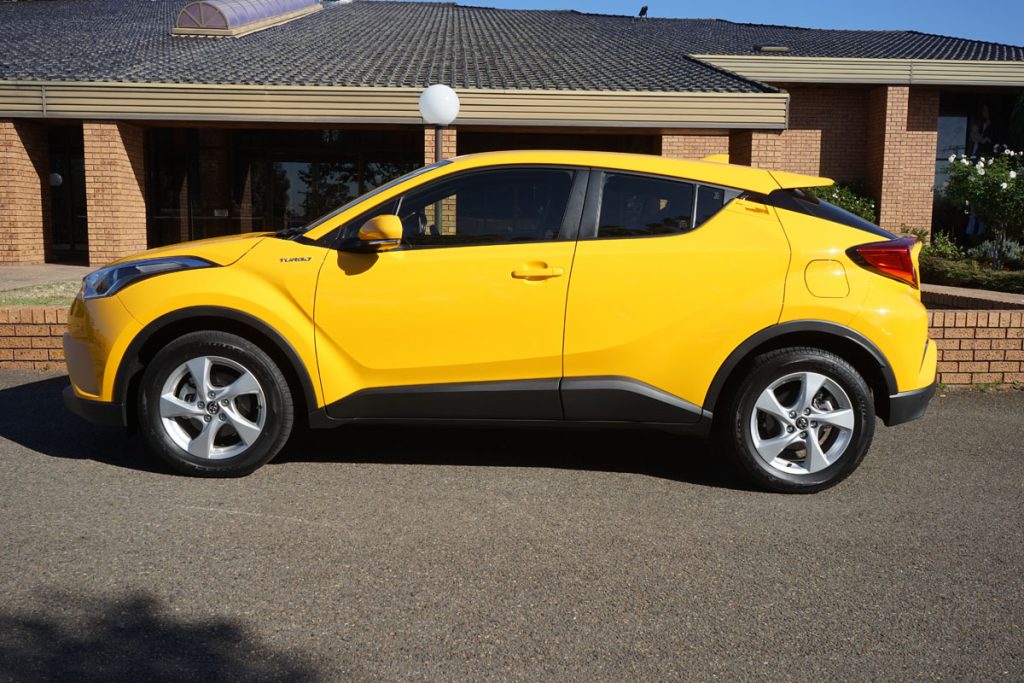 Facts and Figures: 2018 Toyota C-HR
Facts and Figures: 2018 Toyota C-HR
- Engine: 1.2L turbo petrol 85kW/185Nm
- Transmission: CVT
- Safety: Five Stars
- Warranty: 3 Yrs/100,000km
- Origin: Japan
- Price: From $33,290
2018 Toyota C-HR Koba
-
Overall Rating

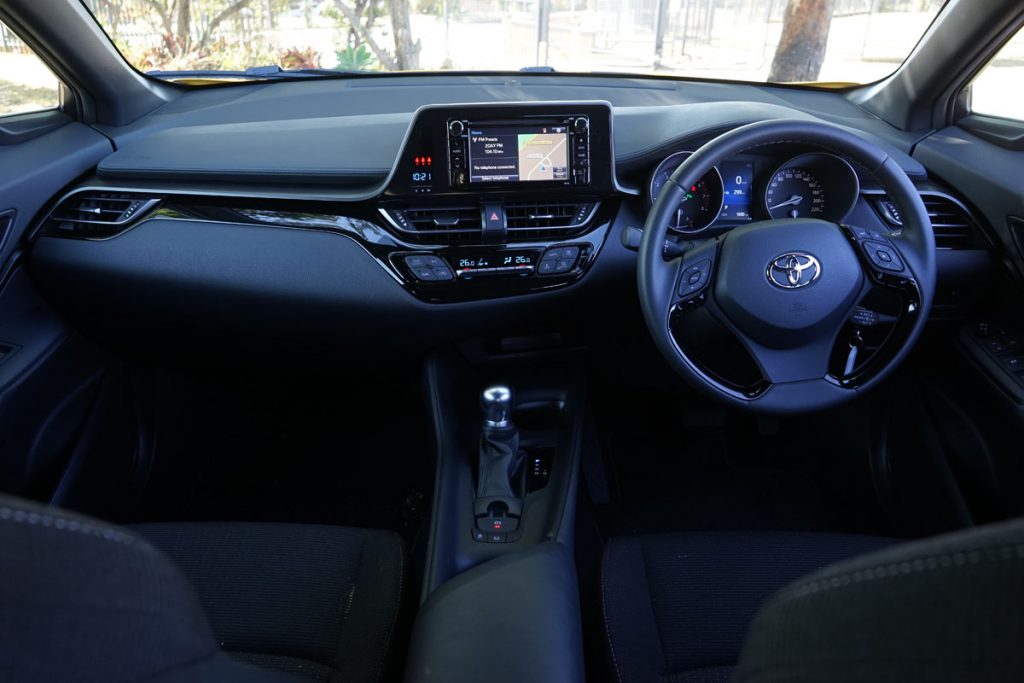
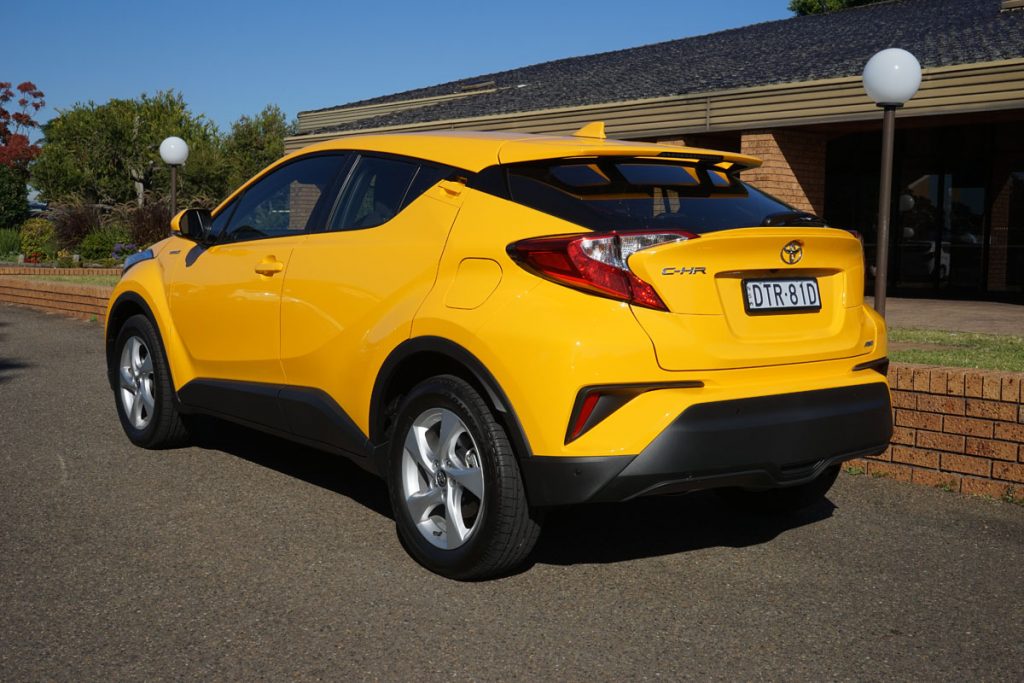
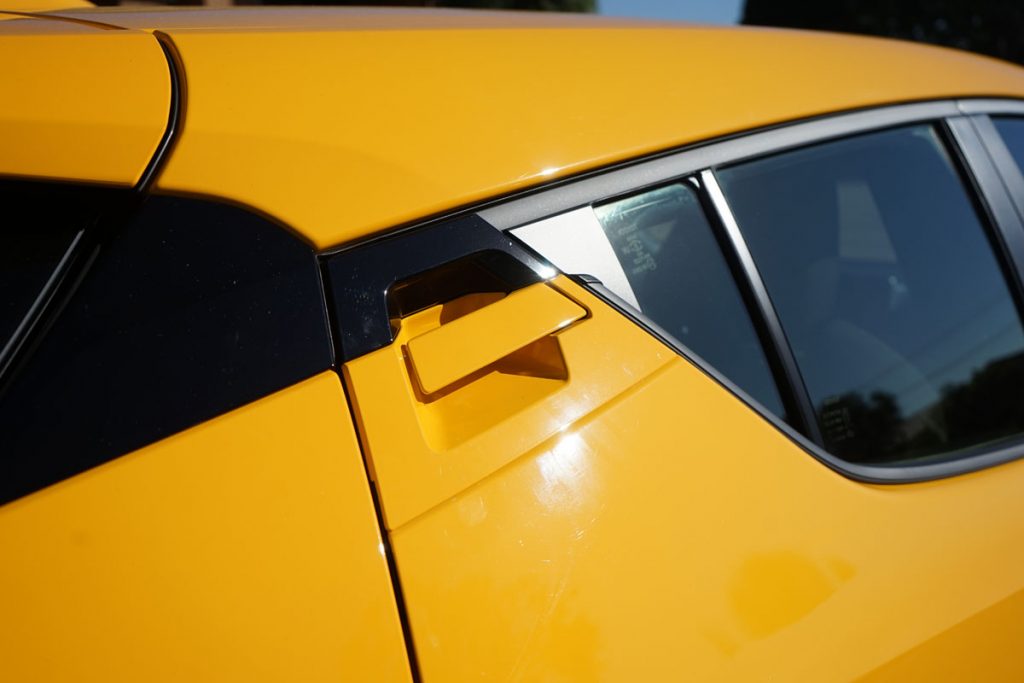

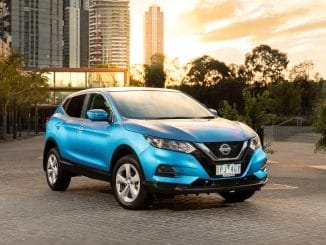

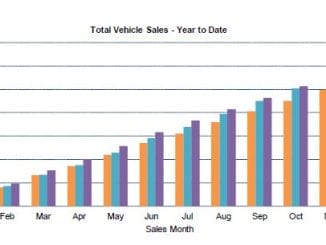
Be the first to comment